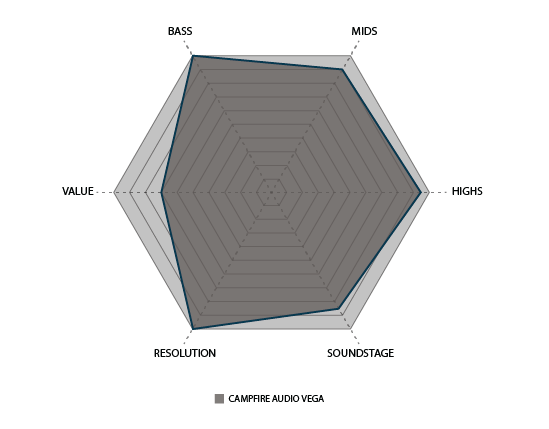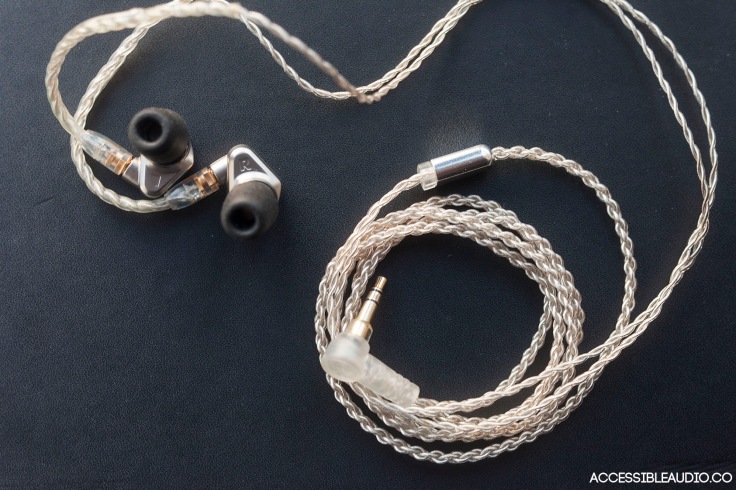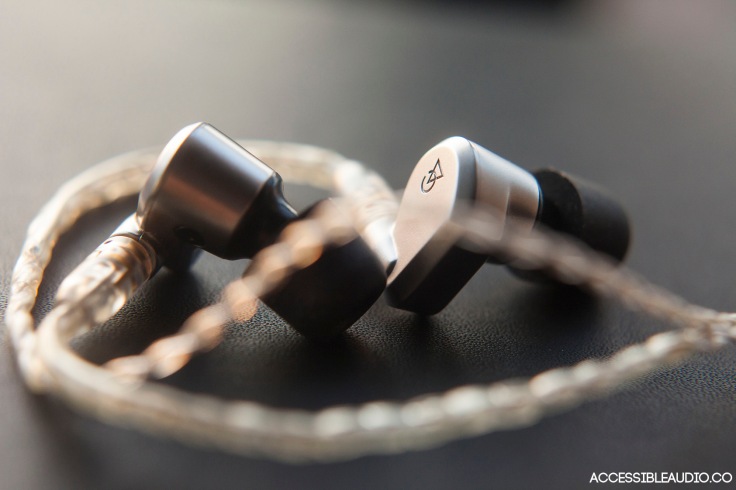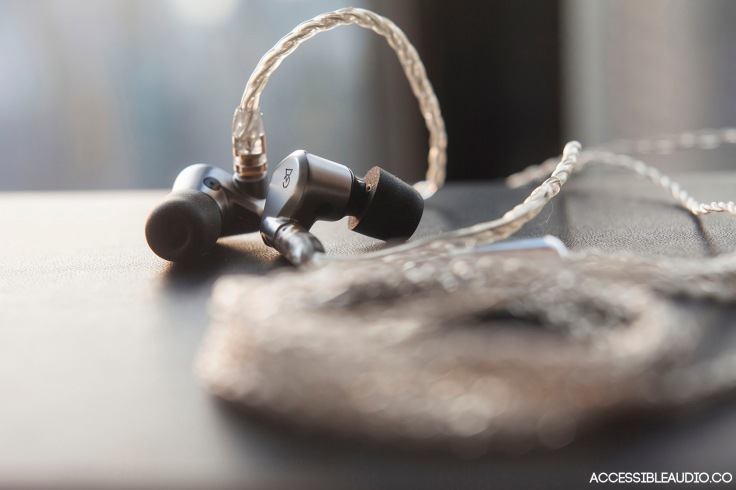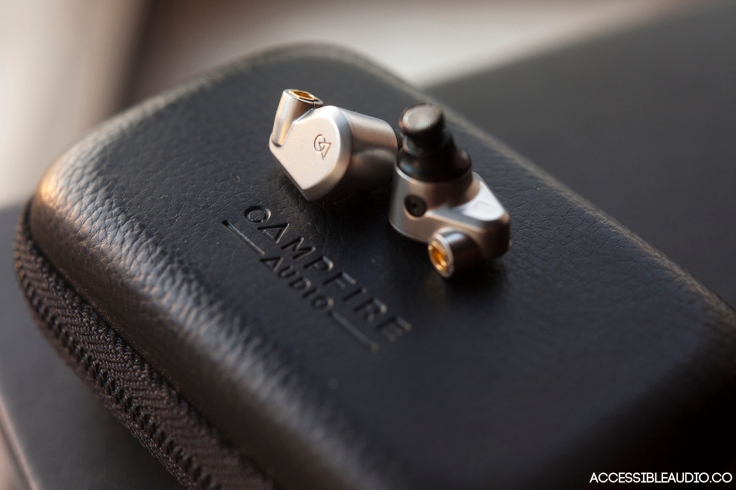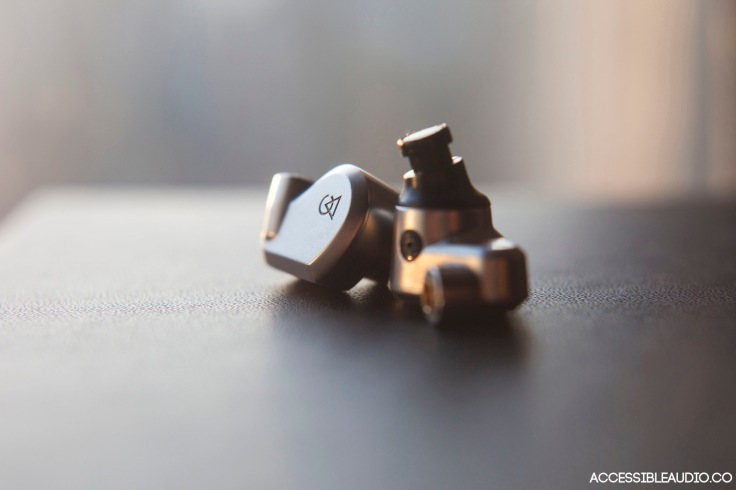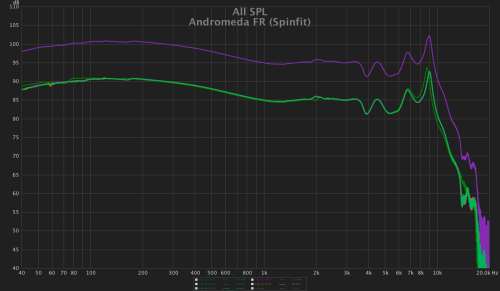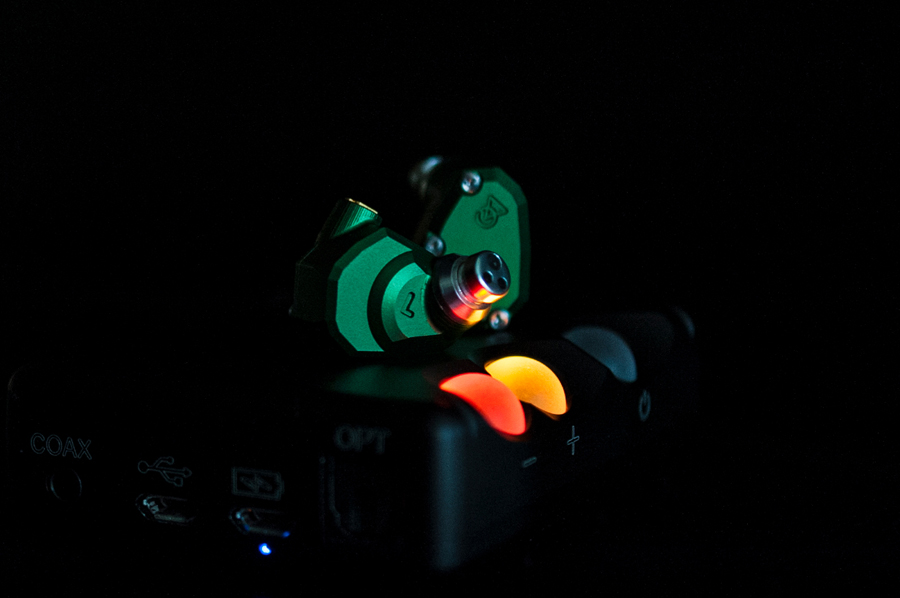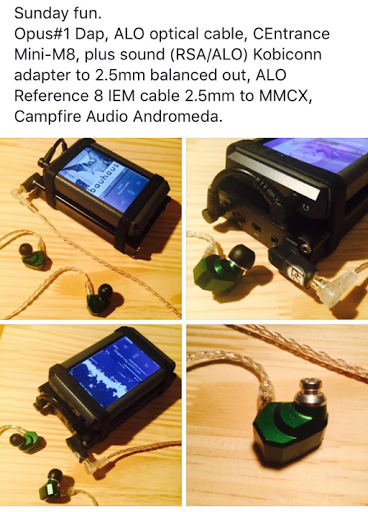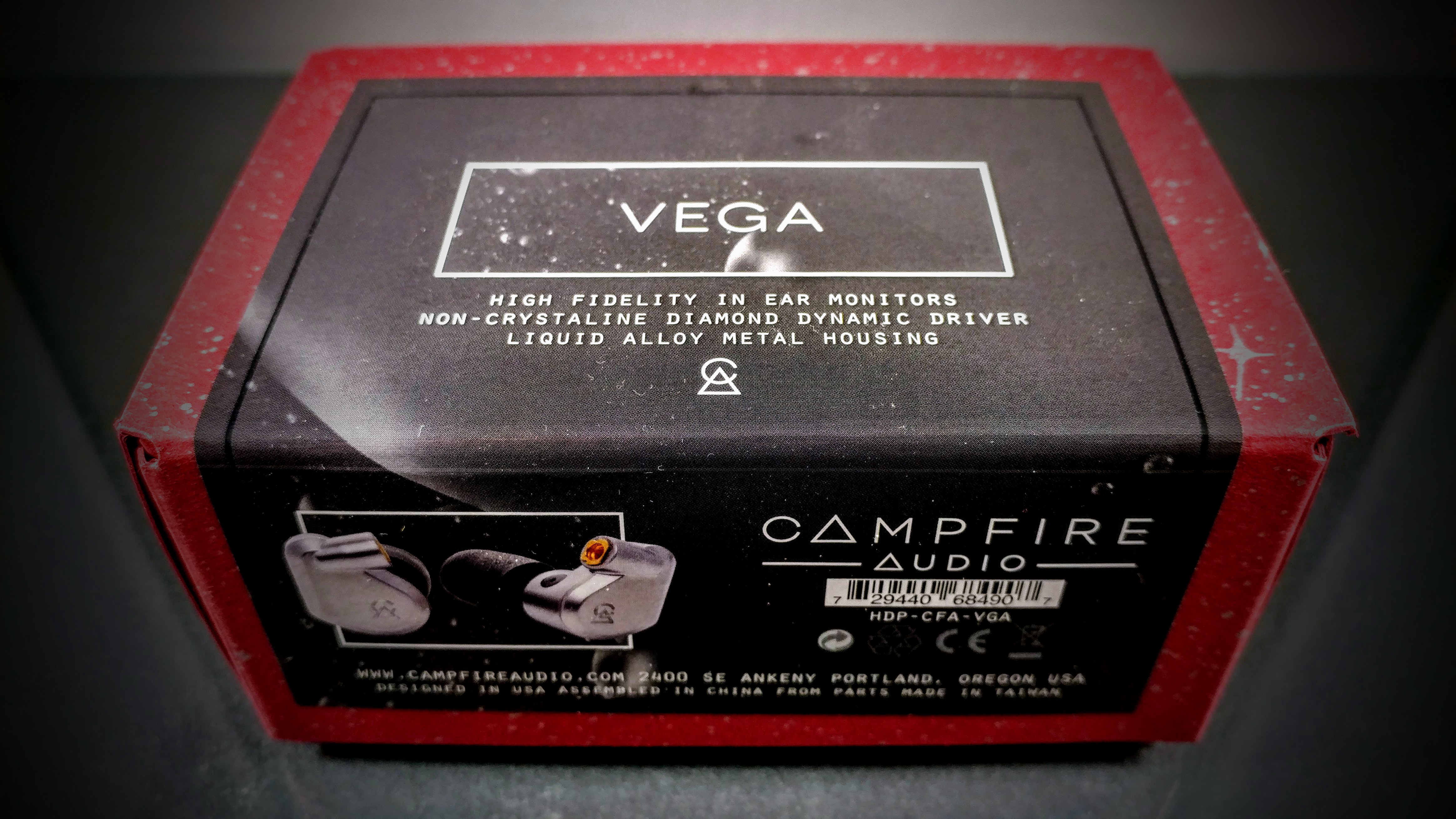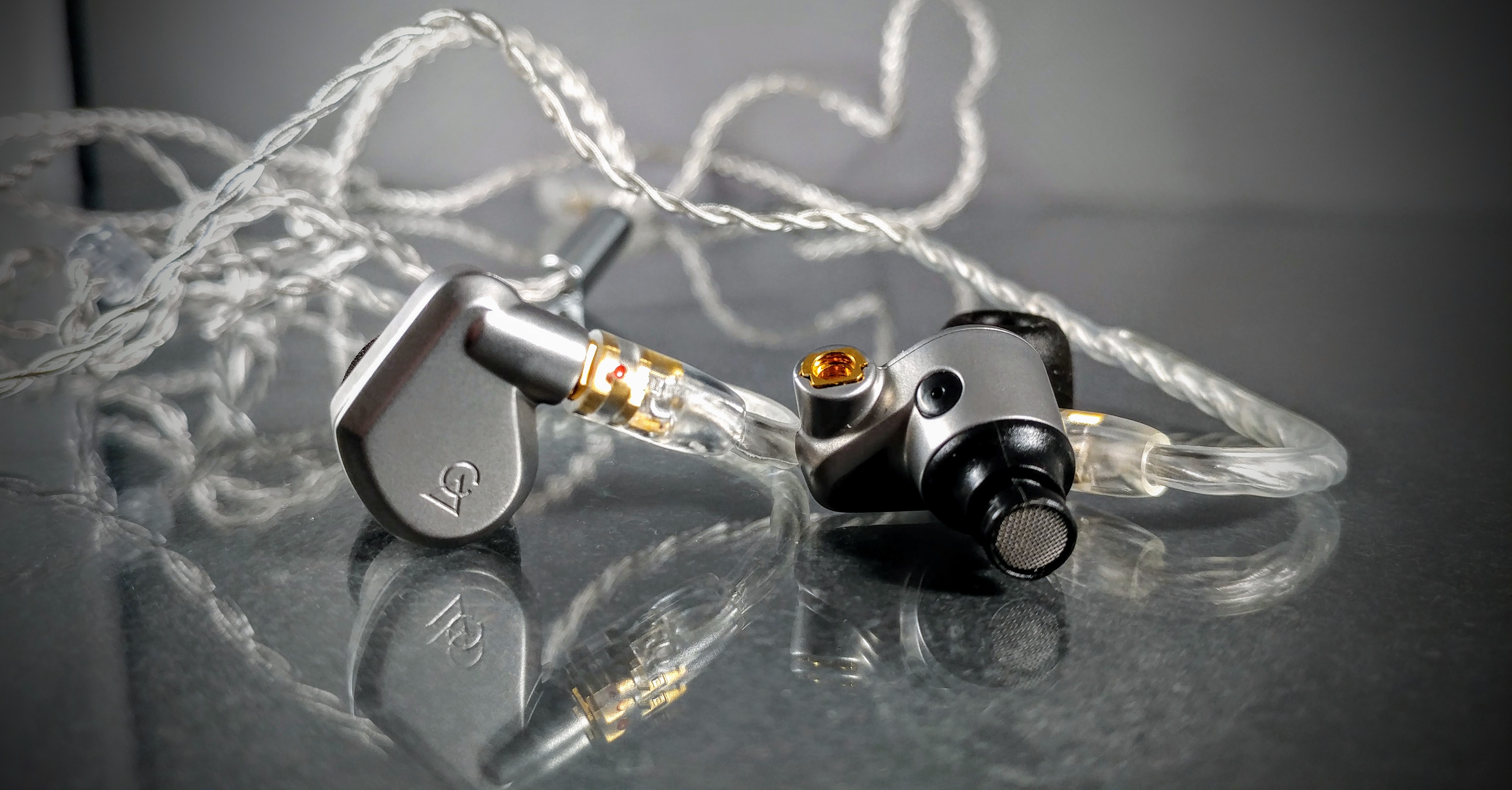 Campfire Audio Vega – initial impressions
Campfire Audio Vega – initial impressions
As you will know if you read my recent review on the Lyra II, I have recently been lucky enough to get the chance to hear the three newest models from the Campfire Audio IEM range (the Lyra II, the Dorado and the Vega). After spending some quality time with the Lyra II, the Vega was the logical next choice for another story around the Campfire as another dynamic driver offering. Considering how much I enjoyed the Lyra II, I was very keen to hear exactly how much improvement the engineers at Campfire could make with their new uncrystallised diamond diaphragm on their dynamic driver technology, and to see if this IEM is rightly deserving of its current “TOTL” tag.
Disclaimer – the Vega were provided to me free of charge by Campfire Audio on a loaner basis for the duration of this review solely for the purpose of listening and writing up my honest and unbiased impressions. If I want to keep them afterwards, I will need to purchase them off Campfire Audio.
About me: been into music since I was old enough to walk, and now been into the audio gear scene for a couple of years. I’m in my late 30s, a long time rock music fan and aspiring to be a reasonably inept drummer. Listen to at least 2 hours of music a day on my commute to work – prefer IEMs for out and about, and a large pair of headphones when I have the house to myself and a glass in my hand. Converted most of my library to FLAC and 320kbps MP3, and do most of my other listening through Spotify or Tidal HiFi. I am a fan of rock, acoustic (apart from folk) and sarcasm. Oh yeah, and a small amount of electronica. Not a basshead, but I do love a sound with some body to it. Please take all views expressed below with a pinch of salt – all my reviews are a work in progress based on my own perceptions and personal preferences, and your own ears may tell you a different story.
 Tech specs
Tech specs
Frequency – 5 Hz to 22 kHz
Sensitivity – 102 dB SPL/mW
Impedance – 17.5 Ohms @ 1kHz
Driver – single 8.5mm ADLC non-cystalline diamond-carbon dynamic driver
Housing – Liquidmetal alloy
Connection type – MMCX
 Unboxing
(If you have read my review for the Lyra II, feel free to skip straight to the sound section – the Vega shares both identical packaging and shell design to the Lyra II, so some sections are pretty much identical to the Lyra II writeup)
Unboxing
(If you have read my review for the Lyra II, feel free to skip straight to the sound section – the Vega shares both identical packaging and shell design to the Lyra II, so some sections are pretty much identical to the Lyra II writeup)
The Vega follows the usual Campfire Audio presentation style, coming in a small box just marginally bigger than the hard leather carry case it contains. The box is a dark burgundy colour, with silver constellations patterned on the outside and a nice picture of the IEMs on the front. There is also a brief description of the technology inside and the Campfire branding, but no major graphs or specifications. The box opens up to show a nice black leather carry case inside, with the usual Campfire Audio embossed logo and zippered closure. Removing the carry case, there is a false floor on the box, underneath which the various loadout of eartips (foam, silicon and Spinfit in various sizes) and a Campfire Audio pin are nestled, along with a cleaning tool, warranty card and small booklet with more technical information on your purchase and instructions on how to use them for those people unfamiliar with operating high tech ear-gear. Opening the carry case completes the gear list, containing the IEMs and silver litz cable, some Velcro cable ties and two small velour bags to keep the heads of the IEMs from clunking into each other when they are stored, all nestled in the fluffy fake wool interior of the case.
The accessory package is simple but comprehensive, with the beautifully designed carry case and the well thought out cable and tip selection giving a premium feel to proceedings, proving that you don’t need to inundate the buyer with technical data or hundreds of add-ons in order to give a high-end unboxing experience. The small footprint of the outer packaging also has more practical use, as it makes it far easier to store than the usual foam filled presentation boxes you tend to get with other IEMs in this sort of price bracket.
 Build quality and ergonomics
Build quality and ergonomics
In contrast to their other co-flagship IEM the Andromeda, the Portland-based manufacturer have decided to go with a Liquidmetal™ alloy housing for the Vega rather than machined aluminium, with a smaller footprint and more curvy appearance than the Andromeda, and echoing the new shell design of the Lyra II and Dorado models.
The use of Liquidmetal is an interesting but logical choice for the high-end IEM market – the substance is actually an amorphous alloy rather than a literal “liquid metal” (such as Mercury), but it brings various qualities to the table that normal metal shells find difficult to match. It is lighter and stronger than titanium, extremely durable and resistant to both corrosion and wear and has a glass-like melting point due to its densely packed atomic structure that allows it to be moulded almost like plastic while hot. For a company known for its finely honed internal tuning structures and excellent shell designs, this is a logical evolution, allowing production of high volumes of complex casings with greater ease than traditional metals. In practice, the shells are light, very strong and fit beautifully in the ear, giving the feel of a piece of machinery designed to last.
Campfire Audio also deviate from the norm with the connectors, using a standard MMCX style socket but bolstering the connection points with a custom beryllium copper fixing, which they claim is more robust than the usual brass connectors found on most IEMs. This should lead to increased longevity of the connector over multiple cable connections and disconnections. In use, the cable clicks into the housing with a very solid sounding thud, and seems to be pretty locked in, with less play or wobble than most other MMCX style IEMs I have used. A few weeks is obviously nowhere near long enough to test the claims of the manufacturer about how long the connectors will last, but initial impressions definitely don’t give me any cause to doubt Campfire’s marketing copy here.
When mentioning build and ergonomics, the Silver Litz cable included as standard with the Vega is befitting of a top of the line product, and is also sold as a standalone item on the ALO Audio site for $149, which should give you some indication of the comparative quality. When looking at IEMs in this price bracket, some may feel the need to break out a more expensive “upgrade” cable to get the most out of the sonic capabilities – I am neither a believer or disbeliever when it comes to cable theory, and don’t have any more expensive MMCX cables in my inventory to try with the Vega, but in terms of quality and sound I am certainly not left with the feeling that these NEED upgrading out of the box to unlock the potential in the IEMs. The only gripes I have are with the memory wire portions around the ears, which I always feel don’t play brilliantly with the rotating connection offered by an MMCX connector, and the L-shaped plug at the end. While the L-plug is a nice and sturdy example of this type of connector, I find the pin just slightly too short to fit comfortably into the audio jack of my phone with a thick third party phone cover fitted, due to the circumference of the connector housing where it meets the pin – one possible area for improvement in an otherwise excellent design.
Overall, the unusual metallic build, ergonomic and light shape and excellent cable give a very strong impression of quality – a pretty good start.
 Sound quality
Sound quality
Test gear:
LG G5 (with HiFi Plus 32-bit Sabre DAC add-on)
Hifiman Supermini
Fiio X7 (with AM2 module)
Microsoft Surface Pro 2 (straight from the output jack) and with iFi iCan SE
Test tracks (mainly 320kbps MP3 or FLAC/Tidal HiFi):
Nathaniel Rateliff & The Night Sweats – S.O.B. / Wasting Time
Blackberry Smoke – The Whipporwill (album)
Slash – Shadow Life / Bad Rain (my reference tracks for bass impact and attack, guitar “crunch”)
James Bay – The Chaos & The Calm
Sister Hazel – Hello, It’s Me (bass tone)
Chris Stapleton – Whiskey And You
Elvis – various
Leon Bridges – Coming Home (album)
Foy Vance – The Wild Swan
Daft Punk – Random Access Memories (album)
Aerosmith – The Definitive Aerosmith
Mavis Staples – Livin’ On A High Note
Twin Atlantic – The Great Divide / GLA
The Darkness – Permission To Land
Led Zeppelin – Mothership
Shawn Mullins – Soul’s Core
Sammy Hagar & The Circle – At Your Convenience (live album for audience sounds)
 General impressions on the sound signature
General impressions on the sound signature
When you think of a TOTL earphone, you imagine something with crystal clarity, endless extension and great grasp of detail and timing. One thing you don’t necessarily imagine coming with that TOTL tag is enough bass to blow a hole in the side of your head the size of Kanye West’s ego. If the thought of that offends you, feel free to stop reading now – the Vega is one seriously bass-capable IEM, with enough low end grunt to satisfy most basshead listeners. It is also an IEM for fans of a forward and vocal-centric midrange, to keep the mid-kids happy. Treble junkie? The Vega has you covered there as well, with a sweet and crunchy top end that doesn’t shy away from being crisp when it needs to be and clear when it doesn’t. Confused? I was – the tuning on offer here seems to be forward in all three categories (to my ears anyway), with more bass than you ever thought you could need but which never clouds or warms the song unnecessarily and always stays clear of fraternising with the mid-range. It has a clear and emotionally charged vocal delivery and instrument portrayal that has bags of definition and detail, topped off with a smooth but extended and highly detailed upper frequency response, with no audible roll-off or tapering.
The team at Campfire have managed all this with one unusual single dynamic driver, bringing what would normally be the defining characteristic of three completely different headphones together to form one overall signature that feels forward in all ranges but doesn’t crowd the listener or the stage, and still manages to be balanced while doing it. Reading the above, the Vega should probably fit into the “neutral” bracket, but it just doesn’t feel right for something with this much bass and mid-range punch for that tag to apply. In short, this tuning is not quite like anything I have heard before, and is very skilfully done to bring the best out of all parts of the sonic spectrum you are listening to in order to achieve a musical balance that is quite addictive. Kudos to Ken Ball and his team in Portland for that – no small feat, but a very welcome one.
 Highs
Highs
Starting with the highs, the Vega produces a clear and strong treble with goof note weight and great extension through the usual listening ranges. It isn’t overly “sparkly” compared to some all-BA IEMs I have heard, but doesn’t roll off through the spectrum, presenting the high notes with crispness and authority. In terms of airiness, it presents a nice sense of space between each instrument, but doesn’t feel overly “airy” as such (if you can understand the difference). I think of a typically airy IEM as creating the sound in my ears as if I was listening to it in a massive auditorium, where you are aware of the walls being very very far away. With the Vega, you can hear the gaps between each note, but the feel is more like you are standing in a concert played in an open field, where the notes drift off into the space rather than echoing back off a distant surface. Make sense? No? Well, tough – that’s the way it sounds to me anyway.
Moving back to less ethereal comparisons, playing some of my usual comparison tracks through the Vega yielded some unsurprising results. “Starlight” by Slash and Myles Kennedy was first up, the helium-infused vocals reaching up into the stratosphere with a thickness that I don’t usually hear, squeezing every drop of treble out of Kennedy’s vocal delivery without adding any grain or harshness. The dissonant guitar opening is always a good indicator of how an IEM handles treble in my “uncomfort” zone, but again, this sounds thick and full, delivering the highs with a level of detail and substance that is again unusual for me. Going on a final hunt for sibilance, “Whiskey And You” by Chris Stapleton again failed to turn up any unpleasantness, the booze-fuelled song (about booze) sounding raw and gravelly, without sandpapering my delicate eardrums as Stapleton’s voice practically chainsaws its way through the second chorus. Delivering texture without harshness is a difficult trick to pull off, but the Vega has it in spades here.
Switching to percussion, cymbals and other metallic instruments sound crisp and very realistic, shimmering just long enough in the ear to leave a sense of presence without sounding too tizzy or dominating the upper echelons of the music. Listening to the Adiemus collaboration, the mix of chimes, flutes and other high stringed instrumentation used sound crystal clear and positively glow against the audio background, cutting through the track without sounding hot or over-emphasised. In fact, this tuning reminds me of the clarity and lack of distortion achieved by the Audioquest Nighthawks, but with an added dose of presence and crispness that really sets it a notch above in my ears. Treble is always defined, never too aggressive or overdone and just right for my personal sonic preferences. A very good start.
 Mids
Mids
Drifting down from the treble, the midrange is clean, crisp and energetic, with a forward vocal presentation. Voices are rendered with excellent detail, the responsiveness of the driver allowing a real sense of feeling to come through when listening to more heartfelt tracks, and raising the hairs on my arm on more than one occasion with a phrase or inflection from the singer that really caught my ear. Quantifying how the IEM captures “emotion” is something I am certainly not qualified to do, but much like the soul, it is something I believe is there in music, whether we can see it on not – the Vega are certainly more adept than most at exposing it to the metaphorical light. Listening to “And The Grass Won’t Pay No Mind” by Elvis and the Royal Philharmonic, Presley’s soft crooning explodes with real angst when the strained chorus kicks into life, making you believe in the words he is singing and seeming to convey what the singer was thinking as he pronounces the words. “You’ve Lost That Loving Feeling” from the same album showcases the same vocal prowess, with the huge bassline (yes, you heard that right – check the track out) never encroaching on another impassioned vocal, blending together perfectly with the gospel style backing chorus to give the impression of actually being at a live performance, the sound surrounding the air around you and lifting you up into the heart of the song.
Strings and other orchestral instruments are handled beautifully by the Vega, with the soaring string into to “Burning Love” from the same album building into the body of the song with authority, each violin and cello singing out clearly around the vocals and bass, with plenty of texture and definition. More traditional orchestral music also sounds great – playing the first Adiemus album by the composer Karl Jenkins is an enthralling experience, the strings sounding rich and delicate at the same time, complementing the lilting harmonies of Miriam Stockley drifting through the track and captivating the attention with the beautiful phrasing of Jenkins’ imaginary language all the songs are sung in. This album really highlights the capability of the Vega to marry the epic bass substance of the timpani and drums with clear and crystalline flute and vocal lines, the mid range and treble acting like a cooling splash of water on the ears over the rumble of the world-music inspired rhythms while still remaining coherent.
Switching up to more traditional rock fare, the jangling guitars of “What Do You Do To Me” by Don Broco ring out clearly, the sound of fingers sliding up and down the fretboard on the nylon-stringed Spanish guitar refrain melding into the sound without causing distraction, and not diverting attention from the more crushing riffs that kick in when the chorus appears, the heavyweight midrange (bolstered by the outstanding heft of the bass performance and the clear and solid treble foundation sitting above it) really adding crunch to the guitar work. Putting some Slash through its paces again, “Shadow Life” and “World On Fire” both absolutely roar with this IEM, the quick downtuned rhythm of the former firing through the musical foreground, thick slabs of riff landing one after the other like blows in a heavyweight world title fight and being shrugged off just as quickly. The combination of weight and note speed is something that really shows up on more complex or intricate tracks, and makes the Vega an excellent IEM for fans of rock or metal, allowing the songs to have some of the “turned up to 11” wall of noise of a Motorhead amp-stack while still retaining the definition and clarity of a piece of chamber music, never veering towards congestion or muddiness. A perfect example of this is “Everybody Knows She’s Mine” by Blackberry Smoke – the opening guitar sounds thick and honky-tonk meaty, with the acoustic riff that kicks in over the top being crisply layered on top of the chunky bar room blues riffing and capturing just as much attention in the ear as the thicker slabs of sound it is sitting on. That isn’t to say that the Vega can’t do delicate, with the subtle guitar noodling of “Noam Chomsky” by Foy Vance playing off against the subdued horn section and the jazz style stand-up bass throughout the song without feeling overpowered by the other instruments or Vance’s gravelly roar of a voice.
Piano and synth are unsurprisingly dealt with in a similar manner to guitar, with a realistic timbre and tone, making any piano-based electronica absolutely sing. Kicking “Go” by The Chemical Brothers into high gear, the presentation is crisp, clear and captivating, with the euphoric chorus being done full justice by the delivery of the Vega’s driver. In truth, there is very little the Vega doesn’t excel at in the midrange, with texture and micro-detail being presented alongside energy and emotion to provide an almost perfect package. I say almost – the presentation of the mids is always engaging, sometimes so much that it can seem a little
too forward for more relaxed or acoustic songs, dragging you fully into the music rather than let you float alongside it with your brain in low gear. It is a small nit to pick, but in much the same way you probably wouldn’t go to a live gig to relax with your head on a pillow, the Vega can have that same effect sometimes.
 Bass
Bass
As a former owner of the Aurisonics ASG-2.5, I am pretty familiar with sticking an IEM in my ears that could probably turn my brain into soup and vibrate my fillings out of my head. I certainly never expected to be hearing the same level of bass authority (and sheer volume) from something being talked about as a “Top Of The Line” contender among the current batch of flagship universal IEMs on the market. The bass will probably be the most divisive (and perversely the most enjoyable) thing that people discuss when talking about the Vega as a “TOTL” in-ear (where mega-bass doesn’t usually get considered as a true audiophile tuning trait) – it is powerful, physical, rumbles like an elephant with indigestion and slams like a WWE wrestler. It extends down to a very believable 5Hz threshold, and holds equally strong as it rises from the deepest sub-bass to the top end of the mid-bass, avoiding the dreaded mid-bass “thumb” that can dominate the lower end of some tunings. All this is achieved without the bass bleeding into the midrange or dominating the sound, which is the real trick here – IEMs with this sort of bass artillery don’t usually feel so well balanced, with the mid-range and treble holding ground easily against the onslaught from the 8.5mm of uncrystallised diamond that Campfire have sprinkled onto the driver diaphragm. This alone makes the signature unusual, allowing the rest of the frequency range to provide the detail and sparkle, served up with a steaming heap of bass to wash it down with.
In terms of texture, the driver technology provides a richly detailed lower end soundscape, sharply defining each note in the listener’s ear and blending the rasping vibrations of the bass guitar notes into the overall smoothness of the delivery to add substance and a physical dimension to the musical foundation. Listening to “September In Seattle” by Shawn Mullins, the honky-tonk style bassline bounces around the track, thickening out the sound nicely without drowning out the subtle crooning of Mullins or the gospel chorus. Switching to “Bad Rain” by Slash, the familiar rasp of the bass guitar gives the song a thick, raw feeling of menace, playing beautifully against the main guitar riff and blending with the thudding impact of the drums to give a sense of fullness to the notes that feels almost palpable. My other favourite for bass texture is “Hello, It’s Me” by Sister Hazel, which is a great mixture of texture and smoothness when done right. The Vega certainly have no issue “doing it right”, with the vibration of the bass guitar strings feeling so clear you can almost picture them in your head as the plectrum hits them, tickling the outer edges of your eardrum as the smooth and velvety bassline slowly fills the space around the instruments with the riff that drives the song along.
Flipping genres to electronica, “Nobody To Love” by Sigma highlights the sub-bass chops on display, with the occasionally anaemic sounding track taking on a real sense of life and impact with the thrumming sub-bass foundation underpinning the main piano refrain and adding a good sense of punch to the drums. “Heaven” by Emile Sande gets the same sort of treatment, the opening hum of sub-sound feeling like a passing juggernaut on the road as the rumble builds in your ears. It truly is very difficult to describe the bass the Vega produces without resorting to various clichés or hyperbole, but for once, the bass just is
THAT good that only the well-worn superlatives will apply. It is super-quick, defined, never sloppy, textured and so well done that it just seems to bring each track to life without over-cooking it or drowning it in bass. There is more bass presence here than fans of a neutral or lean sound will be used to (or indeed look for in an IEM) so this may not be the holy grail for everyone, but the speed and definition produced by the driver manage to keep the bass under control so well that I suspect even fans of more “audiophile” tunings like the HD800 could be beguiled by the power and majesty on display here. Again, hyperbole, but again, probably true.
In summary, when taken in context with the rest of the frequency range, this IEM has the best bass I have heard, beating the ASG-2.5 and the Cardas A8 for speed, texture and just sheer enjoyability. I freely admit I haven’t heard many IEMs in this price bracket, so please take my views with the obligatory pinch of salt, but this is truly a great piece of tuning by Ken and his team, and brings a welcome does of bass-driven musicality to the TOTL table.
 Soundstage/separation
Soundstage/separation
Soundstage is an “out of head” experience, not huge by any means but pushing outwards from the ears by a small margin in all directions, and being more spherical than oval when listening for front to back stage depth. The solidity of the musical presentation is suited by the size of the staging, or possibly even defined by it, with the whole soundscape feeling quite “real” and solid (a common theme), and varying in size depending on the recording. Fans of an arena-sized sound may not be impressed by the comparative “smallness” of the Vega on some tracks, but the organic nature of the sound more than makes up for that for me. Separation is top notch, with the diamond driver providing layer after layer of cleanly defined notes, stacking them like a world champion Tetris player in perfect order in your ears, allowing you to pull apart any strand of the music you want to concentrate on with ease. The driver also copes easily with complex passages of music, packing a Tardis-like amount of information into the sound in some more orchestral passages from bands like Nightwish without sign of strain or congestion.
 Tip and cable choice
Tip and cable choice
The recommendation from the Campfire Audio founder Ken Ball is to run these IEMs with foam ear-tips, and like with the Lyra II, after trying various other configurations (single flange silicone, SpinFit and other assorted goodies from my tip collection), I have come to the unsurprising conclusion that he knows what he is talking about. The overall sound and comfort offered by the included foam tips seems just about right for my personal tastes and ear anatomy, so for once there has been no need to resort to external help (not even Comply tips added anything major to the seal). A close second is a hybrid tip from Trinity Audio (the Kombi), which adds a little in treble sharpness to the mix while retaining the same basic overall signature due to the foam / silicon mix. Close, but not quite as enjoyable as the foams for me. The cable is a similar story as the foamies, being of sufficient quality for me not to think about resorting to a third-party solution. In the interest of “science”, I have run these balanced using a cheap Fiio balanced cable I have from the Hifiman Supermini, but the difference wasn’t drastic enough for me to be audibly worth it from that source, as the single ended output was able to drive them sufficiently loud with its high voltage output – I may retest this if I get a balanced amp section for my Fiio X7 at some point, however, to see if a more powerful balanced out makes any difference.
 Power requirements
Power requirements
The specs on the Campfire Audio website indicate that these should be reasonably easy IEMs to drive, and I haven’t had any issues with that in practice. As with the Lyra II, my comfortable listening volume sitting just above the half way mark on my LG G5 and in the 50s on the Fiio X7 (AM2, low gain). The diamonds used in the driver coating do seem to glitter with some extra power behind them, so where possible I run them from the Hifiman Supermini (with its powerful single-ended output) or in high gain and slightly lower volume setting on the Fiio X7. As you would imagine, the technical capabilities of this IEM really benefit from a decent source chain, so they will definitely scale with the capabilities of your DAP or amp if given the chance. Playing these through my LG G5 (without the HiFiPlus module) is still a great sounding combination, but just serves to remind me what the gear is capable of when driven properly.
 Comparisons
Astell & Kern / Beyerdynamic AKT8IE
Comparisons
Astell & Kern / Beyerdynamic AKT8IE – this is another bassy single dynamic driver I have recently acquired, based around a miniature version of Beyerdynamic’s reknowned Tesla driver technology and sitting in the TOTL bracket for dynamic drivers at time of writing. This is the “Mark 1” version of the IEM, which is purported by some so be slightly more bassy than the latest “Mark 2” revision, just for clarity. Original retail for the Mk1 was around the $1000 mark, although these can now be had cheaper on the second hand market (like mine). In terms of presentation, the Astell & Kern packaging is definitely a high-end affair, with a large multi-sectioned hardboard box and multiple areas to unbox, compared to the slick but minimalist approach of Campfire. If packaging matters, the AKT8IE will definitely turn more heads than the unassuming Campfire box. Moving on to the build and ergonomics, the AKT8IE is made out of an unspecified material that looks like a cross between metal and ceramic (and is probably neither) – they are a “concha-fit” style IEM, so are designed to fit in the outer bowl of the ear rather than inserting further in. For my own physiology, they provide a shallow but secure fit, and are actually more comfortable than the Vega in that aspect, but do provide less isolation as a result. Moving through to the sound, the AKT8IE is a more laid back tuning than the Vega, with a slightly less present but warmer sounding bass and less treble energy in comparison. Starting with the bass, the AKT8IE is no slouch, providing a good amount of mid and sub-bass, with the weighting slightly more towards the lower end of the midbass to my ears compared to the more even bass throughout the spectrum on the Vega. The bass feels softer and less crisply defined than the Vega, still far from sloppy but feeling less nimble on more uptempo tracks in direct comparison and exhibiting slightly less physical “slam” or viscerality. It can also sometimes feel like it is starting to overshadow the lower midrange on particularly bassy tracks, where the Vega stays more clearly defined and never feels like it is crowding or colouring the track. Moving through to the mids, the AKT8IE feels roughly similar to the Vega, roughly the same in terms of forward positioning on most tracks but slightly less thick in overall note weight, leaving the notes sounding a little more delicate and fragile. Both IEMs are very good at conveying emotion in a vocal track, but the Vega take a slight edge here, with an additional layer of crispness to the vocal delivery that engages the listener more than the softer and more laid back delivery from the AKT8IE. Detail levels are too close to call, with the AKT8IE presenting high levels of detail with the right source, but layering them further back in the background of the soundscape, whereas the Vega extracts every detail from a track and lays them out a little more openly for the listener to appreciate. Treble tuning is where these two IEMs diverge, with the AKT8IE exhibiting a more laid back and almost rolled off sounding higher end (it isn’t, with a stated top end extension of 48 kHz), compared to the crisper and more present signature of the Vega. The lower emphasis on treble for the Beyerdynamic / A&K product allows a more relaxing and laid back feel to the music, and actually manages to give a greater sense of air with the high range it does produce due to the excellent
actual extension, rather than the perceived extension (for me, anyway). In terms of power, the Vega requires slightly less volume steps on my various pieces of gear to produce the same volume as the A&K/Beyerdynamic collaboration. In summary, both IEMs provide a bassy and emotional sound, with the Vega sounding crisper and more energetic, with more presence up top and a more balanced sound. The AKT8IE gives a slightly thinner feeling midrange and more delicate but less prominent treble, leaving it sounding more soothing with acoustic music and less energetic tracks but losing out to the lively and more forward and balanced overall sound on the Vega. The differences stated above are all small, and both IEMs are at the summit of the in-ear monitors I have heard to date in terms of clarity and overall presentation of the music, and would both find a use from me for different types of music. Personally, if I had to choose just one, I would plump for the Vega, with the more engaging sound and slightly more emotional vocal delivery winning for me over the laid-back beauty of the AKT8IE. These are fine margins, however, and both IEMs certainly produce a sound that will keep the listener enthralled with the right source and music. One point to note – I compared the AKT8IE using a spare Campfire Audio SPC Litz cable from the Lyra II review I have just finished. This appears to me to bring slightly more out of the IEM than the stock cable in terms of treble, but that is just a perception rather than a measured fact – in either case, the comparisons above are based on using this cable on both IEMs.
Campfire Audio Dorado – this is another new IEM from Campfire Audio, sitting just below the Andromeda in their pricing structure at $999. It is the only hybrid IEM currently on offer in their lineup, utilising the same 8.5mm beryllium dynamic driver from the Lyra II in conjunction with the dual high-frequency balanced armature drivers used in the Jupiter and Andromeda. In terms of signature, the Dorado is more of a traditional V or W shape than the Vega, with a relatively more laid back mid range, a thick bass and great airy treble. The only thing stopping it from being a traditional V shaped tuning is a lift in the vocal region which brings the vocals further forward. In comparison to the Vega, the bass feels a little more boosted in comparison to the lower midrange, giving a bassier “feel”, even if the volume of output is actually pretty similar. The bass descends just as deep as the Vega, but feels a little boomier in direct comparison, losing out slightly to the technical prowess and snappiness of the diamond driver in the Vega. Moving through to the mids, there is a more laid back feel to guitar and instrumentation, sitting a little further back in the sound compared to the vocals, which have been brought forward to almost mirror the Vega’s forward style, sitting just a shade further back overall. In direct comparison, the lower and higher midrange don’t sound as thick or textured as the Vega, tailing off on either end of the vocals and leaning more towards the “V” shaped landscape familiar to most audiophiles. Moving on to the treble, the Dorado has an airier and more “sparkly” feeling treble, the dual-BA tweeters taking up most of the workload in tandem with Campfire’s patented TAEC technology (Tuned Acoustic Expansion Chamber) to provide an airier sound to the high notes, with a good feeling of space. It loses out a bit on note weight in the higher range as a result, but for fans of a more traditional BA style high end tuning, this may appeal more than the more grounded and solid feeling treble of the Vega, with more of a sense of “fizz” to proceedings. In terms of driving power, the Dorado are easier to drive than the Vega, but only by a small amount (probably due to the comparative bass “boost”. Overall, the Dorado provide a more “fun” and V/W shaped tuning, pushing bass and treble more to the forefront, and losing a bit of richness in the midrange as a result. Both are definitely up there in term of overall signature, with the Vega just edging it for me personally due to its better balance and richer sounding mid-range, with slightly better micro-detailing apparent through the middle of the sonic spectrum as well. For fans of a crisper and less rich sound or an airier high-end, the Dorado may well prove to be the sleeper hit of the new Campfire range, however, and rightly deserves to be talked about in a similar bracket to the Vega purely on technical achievement. The only area where there is clear daylight between the two models for me is fit, with the Dorado’s giraffe-like stems causing my very wide but apparently not incredibly deep ear canals a bot more difficulty getting a good seal then the more ergonomic barrel design of the Vega.
Campfire Audio Lyra II – the Lyra II is the “other” new dynamic driver IEM in the 2016 Campfire Audio range, priced at just over half the Vega’s total cost at $699 and sharing the name and housing shape with its predecessor the Lyra, the original dynamic driver offering from the campfire stable. It shares an identically shaped housing and also uses a single 8.5mm dynamic driver like the Vega, but uses a beryllium driver rather than the more exotic diamond driver in the flagship model, which contributes the only major difference to these two pairs of IEMs. So, is the price difference of $600 worth it? Looking at the bass frequencies first, there is a notable difference between the Vega and Lyra II, with the Vega producing considerably more bass than the Lyra II, with more emphasised sub-bass and a tighter overall delivery (not by much, however). The Vega just has the edge in terms of speed as well, compared to the textured and thick but comparatively more laid back bass on the Lyra II. Switching to mids, both IEMs are well matched in terms of emotion, with the Vega just adding an extra layer of micro-detail and expression to the sound – the difference is more subtle than vast, but the slightly more energetic signature is more engaging (I find it “pulls” me into the song more), but as a result it loses some of the soothing nature of the silky midrange on the Lyra II. Put simply, the Lyra II is an IEM you can relax with, the Vega is an IEM that gets your pulse racing. Highs are definitively more forward on the Vega – it is actually rated slightly lower in terms of “final” extension, topping out at 22kHz, but the treble isn’t pushed back into the soundscape like the Lyra II, which shares a similar level of forwardness in the bass and midranges but scales back the treble to provide a smooth and less emphasised top end. As a result, music that relies on cymbals and other percussion sounds crisper on the Vega, and it brings an extra layer of crunch to guitar heavy music over the similarly weighty Lyra II. Micro-details and dynamics are noticeably better on the Vega (although again, the margins we are talking about are small rather than glaring), and the separation and layering is noticeably better on some tracks, the “wall of sound” carrying more positional detail as it smashes you with music. Listening to “Freak On A Leash” by Korn gives a good example of the difference between the two IEMs, with the Lyra II handling the drop at the 2 and a half minute mark with aplomb, but the Vega managing to keep pace with the Lyra II and making the hairs on my arms stand up every time. Finally, the Vega appears to be easier to drive than the Lyra II from all of my sources.
 Overall conclusions
Overall conclusions
Being honest, when I got the chance to listen to the Vega, I wasn’t sure if the jump from mid-fi to a true “TOTL” contender would be worth the increased price tag over something like the Lyra II (which at $699 is already in a price bracket that most non-audiophiles would consider crazy for a pair of in-ear headphones). Add to that the universal law of diminishing returns and my natural scepticism over anything that gathers as much hype as is currently surrounding the Vega, and I was almost hoping for this to be an unimpressive but competent listen, so I could pat my wallet with a sigh of relief and carry on as I was, blissful in the knowledge that the extra cash outlay wasn’t worth it for the marginal imrovements. Sadly for my wallet (and future listening habits), the Vega has taken a shiny Liquidmetal hammer to my preconceptions, and produced hands down the best sound I have heard so far from an in-ear monitor. Is it perfect? Not if you consider perfect to mean “everything to everybody” – it will have too much bass for some, not enough sparkle or extreme treble for others, and the midrange will be too thick or too forward for certain people. For the vast majority, the musical balancing act that Campfire Audio have pulled off with their new shell and driver technology is something that will get close enough to perfect to make them happy, and bring a sense of life and joy to their music collections that is sometimes breathtaking. Could I ask for anything to be done differently? In all honesty, yes – the beautiful energy of the Vega doesn’t suit every single type of music, and can sometimes make relaxing into a song harder than with other high-end IEMs I have been using recently like the Lyra II or the AKT8IE. That is a small price to pay for something so compelling and musical, though – hype or not, this is a great example of a top of the line sound in a top of the line casing, and if the rest of the TOTL bracket sounds like this, I can finally understand why so many Head-Fi’ers are now poor. In summary – stellar bass, detailed and emotionally involving midrange and crystal clear treble, all in the same IEM. Truly a package worthy of its flagship status, and just a great sounding headphone. In the words of the firm themselves: Nicely Done.


